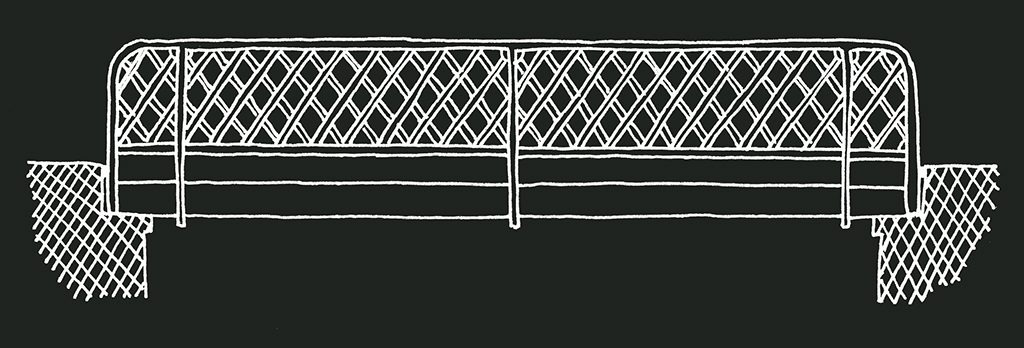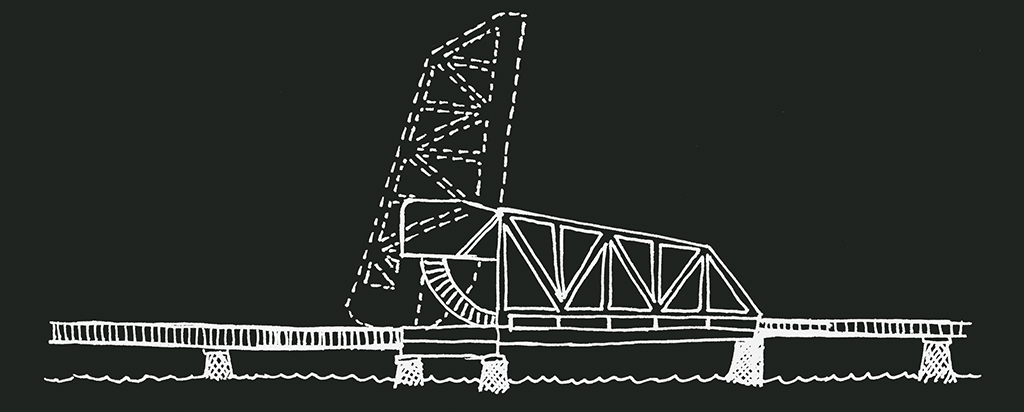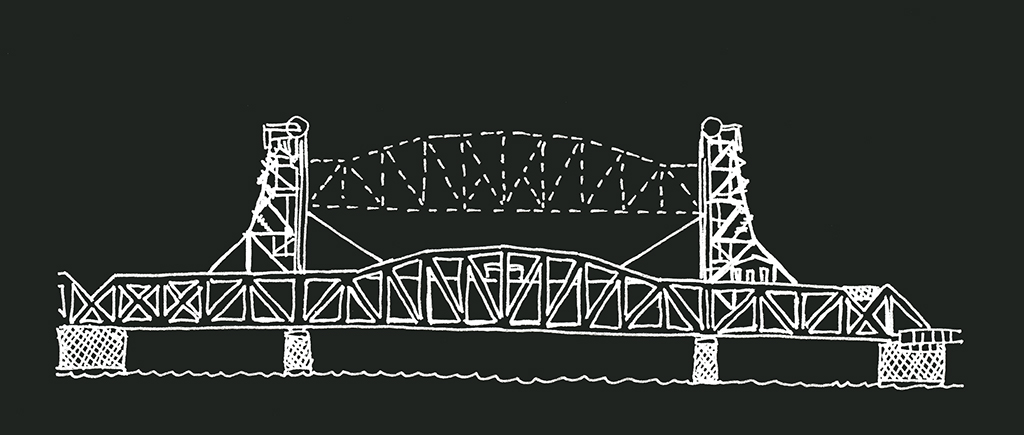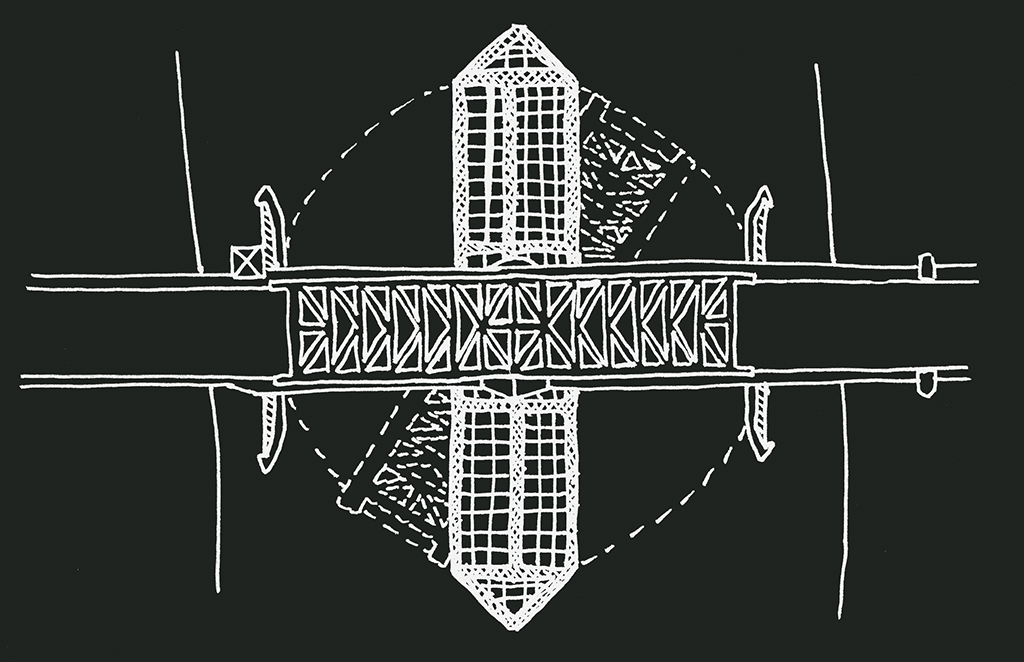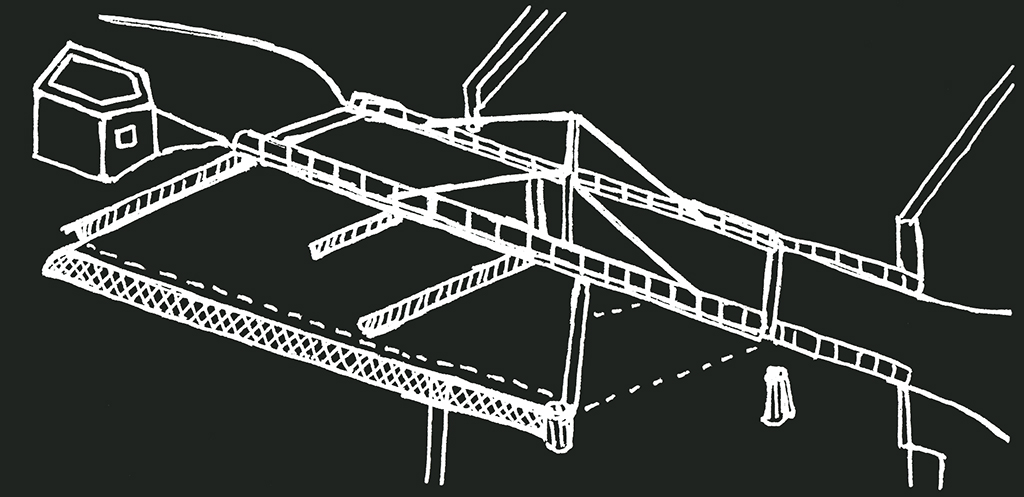
Truss
Truss bridges are some of the earliest types of “modern” bridges. They are made up of connected triangles which bear stress from tension, compression, or both at once. Early truss designs were composed of wood and iron, and later have been built of steel. The roadbed may be below the structure, above (deck truss), or in the middle (through truss). There are many types of truss, notably the Pratt, Philadelphia (Petit), Waddell (“A” truss), Lenticular, Warren, and Whipple.
Examples: East 174th Street Bridge, Triborough Bridge (Bronx Kills)
– – – – – –
Cantilever
Cantilever bridges are a complicated type of truss bridge used for long spans. The cantilevered arms project outward, supported on only one end. They have been favored in certain locations because they don’t require any falsework to be constructed, so don’t restrict navigation.
Examples: Queensboro Bridge, Goethals Bridge
– – – – – –
Arch
Arch bridges have an arch shape which is supported by abutments on each side. Arch bridges have been built of stone, brick, concrete, iron, and steel, and have been used to carry aqueducts and canals as well as people. Supported deck arch bridges are designed with the deck on top, the weight supported by columns rising from the arch below. On suspended deck arch bridges, the deck hangs from the arch by cables or ties.
Examples: Hell Gate Bridge (suspended deck), Washington Bridge (supported deck), East 238th Street Bridge (supported deck), High Bridge
– – – – – –
Suspension
Suspension bridges are designed with a deck that hangs on suspender cables attached to large main cables. The main cables are draped over towers and are secured to massive anchorages at either end of the bridge. Suspension bridges can be used to span the longest distance of any bridge type, as most of the weight is carried by the cables. Like cantilever bridges, no falsework is required to build them.
Examples: George Washington Bridge, Manhattan Bridge
– – – – – –
Cable Stayed
Cable stayed bridges consist of one or more towers (often called pylons) with cables holding up the deck. They are used in situations long enough that a cantilever would be very costly to construct, but not so long as to require a suspension span. There are two main types of cable stayed bridge. The harp design consists of nearly parallel cables attached at different heights going up the tower, and the fan design has all the cables at the same point at the top, fanning out to the roadway deck below.
Examples: Intrepid Museum Pedestrian Bridge, Rockefeller University Bridge
– – – – – –
Girder
Also known as beam or stringer bridges, this type of bridge consists of girders which are supported by abutments at the ends of the bridge. Early girder bridges crossed water by means of a simple wood plank deck resting on piers. Modern girder bridges are usually made of reinforced concrete or steel. Some common types are concrete slab, I-beam, T-beam, plate girder, and box girder bridges.
Example: Passaic Street Bridge, Eagle Avenue Bridge
– – – – – –
Movable
Movable bridges do just that: they move to allow passage below. They’re far cheaper than fixed high level bridges and don’t require the extra space for long approaches. There are several types:
– – – – – –
Bascule
Bascules are the most common type of moveable bridge, and either have a single or double leaf deck structure. Each leaf’s opening is balanced by counterweights. Single leaf bascule bridges are easily spotted by their huge counterweights and truss structure above the deck, while the weights and truss are under the deck in the double leaf variety. Most bascule bridges fall into two categories: Scherzer rolling lifts (which roll open into position), and trunnion bascules (which open on a fixed axle).
Examples: Roosevelt Avenue Bridge (double leaf), Bronx River Bascules (single leaf Scherzer rolling lift)
– – – – – –
Vertical Lift
Vertical lift bridges have a moveable center span which lifts straight up to allow water traffic to pass below. Most have two towers on either end of the span, with counterweights contained within. The operator’s house may be located on the moveable span itself, or in the towers. The counterweights in vertical lifts have to weigh just as much as the deck (not more, as is the case with bascules), so they are often used for long spans which will carry a lot of weight.
Examples: Passaic River Bridge, Marine Parkway Bridge
– – – – – –
Swing
Swing bridges pivot on a central pier. They require no counterweights so can be much lighter than vertical lifts or bascules. However, the pier can be an obstruction to water traffic- it significantly decreases the navigable width of the waterway. The swing portion is a cantilever that needs to be strong enough to support itself on the pivot when the bridge is in the open position.
Examples: Macomb’s Dam Bridge, Dutch Kills Swing Bridge
– – – – – –
Retractile
There are only four retractile (or retractable) bridges left in the United States, and two are in New York City. The moveable portion sits on train wheels and slides back onto a piece of land adjacent to the bridge, pulled along rails by cables.
Examples: Carroll Street Bridge, Borden Avenue Bridge




